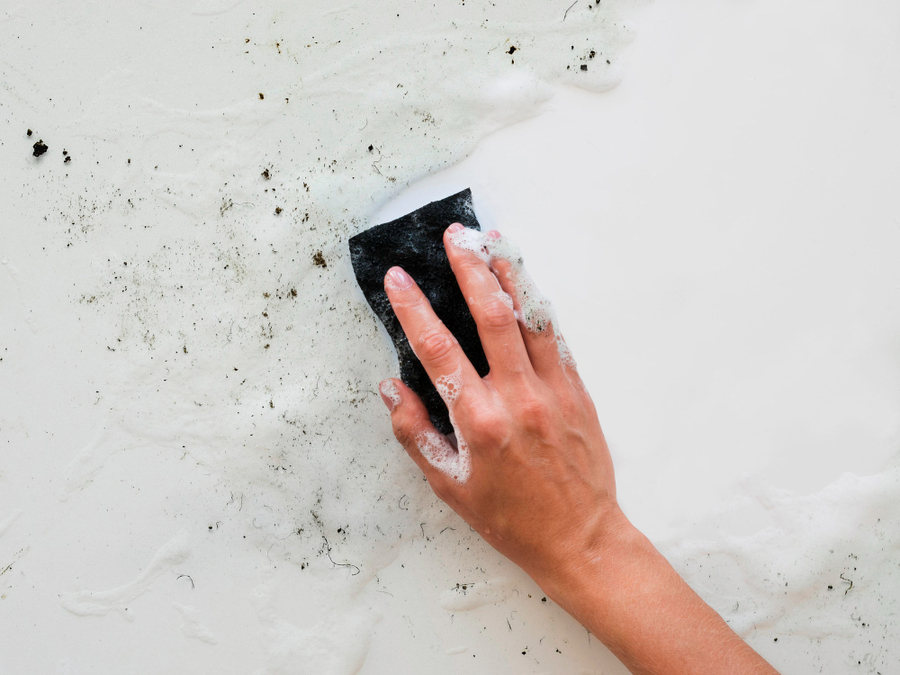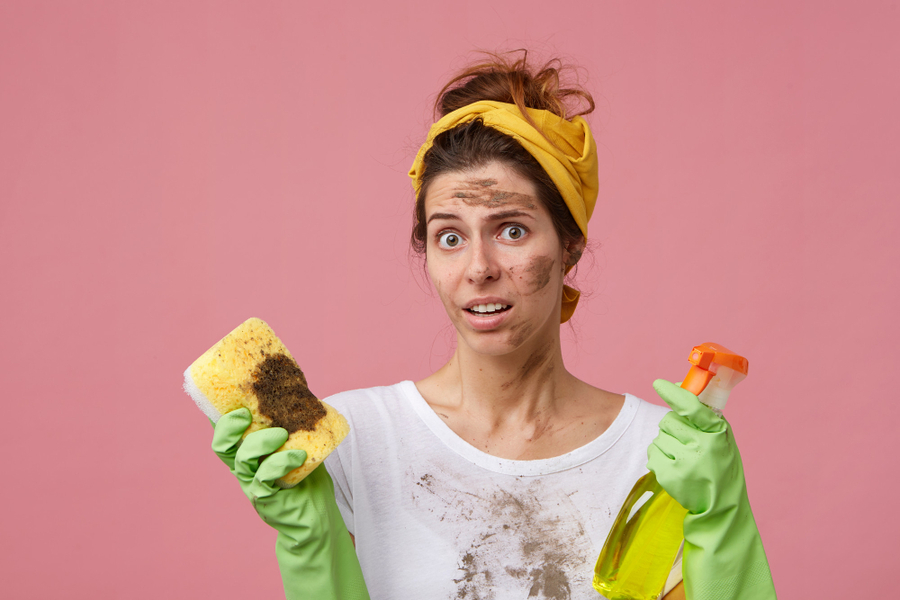Mold is definitely the worst kind of guest to have, that guest that pops in and stays for too long! This guest creeps into your shower grout, hides out under your kitchen sink, and may even find a spot on fabric that has been forgotten in the wash.
Mold just pops up uninvited, with notice. It settles in before you even realize it has stopped by. Most people take the shortcut of either bleach or expensive chemical cleaners; but what if we told you that the answer is already in your pantry?
Most people take the shortcut of either bleach or expensive chemical cleaners; but what if we told you that the answer is already in your pantry?
Yes, really! When white vinegar and baking soda are combined they become a natural cleaner that is very effective for mold in about 5 minutes. No nasty fumes. No scrubbing into oblivion, just results! Here’s an easy cleaning solution that’s safe, affordable, and ridiculously easy and also works like magic. Read on.
The Reason Mold is More Than Just Ugly

Before we dive into the magical mix, we should discuss why mold is a problem for many, it is not just disgusting to look at, mold can cause:
- Respiratory problems
- Headaches
- Skin irritations
- Musty smells.
- Damage to walls, ceilings, or fabric
Mold can take hold especially in areas with humidity (like Florida and the South). so if you see it, your biggest weapon is spotting in early and knowing what to do afterwards.
The Dynamic Duo You Already Have
Let’s get into it:
1. White Vinegar
- Contains acetic acid, which kills 82% of mold varieties.
- Safe to use on most surfaces including fabric and grout.
2. Baking Soda
- Natural deodorizer.
- Has a mild antifungal function too.
- Good for scrubbing
Together, these two work together like a cleaning duo. AND with no toxic chemicals & no elaborate cleaning supplies.
How to Prepare the Mold-Eliminating Mix
Ready to get going? Here’s how to prepare the mix as well as use it.
You’ll Need:
- 1 cup white distilled vinegar
- 2 tbsp. baking soda
- Funnel (optional but handy)
- Dry microfiber cloth or rag
- A spray bottle
Step-by-Step: The Mold Removal Process

Step 1: Begin With the Preparation of the Cleaning Solution
In a bowl or measuring cup, put 1 cup of vinegar. Then, slowly pour in 2 tablespoons of baking soda and gently mix. It will fizz (that’s the natural chemical reaction). Once it stops fizzing, gently mix to combine.
Tip: If you care to, you can also add also here if you want the smell to be refreshing after you are cleaned.
Step 2: Pour Into a Spray Bottle
When you notice it fizzles have slowed down to nearly gone, use a funnel to pour it into a spray bottle. Make sure the spray bottle is clean, we don’t want any chemical residue interfering with our natural cleaner.
Step 3: Spray Generously on Moldy Surfaces
Target the nozzle and spray on:
- Bathroom tiles
- Grout lines
- Fabric (curtains, shower liners)
- Wooden surfaces (test a section first)
- Window sills
- Underneath the sink/cabinets
- Moldy shoes
Step 4: Allow to Sit (5–10 Minutes)
If you have to wait, so be it, let the solution work. You do not need to scrub or wipe immediately. The vinegar is going to penetrate the center of the mold roots, and with the baking soda’s help, loosen the stains.
Step 5: Wipe Off With a Dry Rag
Once you have waited 5-10 minutes, get a dry rag or microfiber cloth, and wipe it down. The mold should almost wipe off without any scrubbing.
Where This Mixture Works Best (and Where it Doesn’t)

This vinegar + baking soda mixture is very flexible, but it does come with some limitations. Let’s take a look:
Great for:
- Bathroom tile & grout – especially in showers, or around tubs.
- Window sills – where condensation often leads to mold growth.
- Kitchen sink area – under counter or around faucets.
- Washer seals – rubber gaskets on front-load washers.
- Shower curtains & liners – just be sure to test a patch first.
- Refrigerator seals – mold absolutely loves moisture and dark places.
- Shoes or fabric – use lightly, and air dry in the sun.
Not great for:
- Marble or natural stone – vinegar is an acid, which can etch surfaces.
- Electronics or outlets – never spray directly on electronic parts.
- Painted surfaces (without testing) – may actually strip paint or finish.
- Severe mold infestations – you need a professional if the mold is deep inside walls or carpet.
Conclusion
Ultimately, you don’t need fancy products or harsh chemicals to deal with imaginary invaders that might be lurking in your home or even in your bathroom. With a bottle of vinegar and a scoop of baking soda, you’ve got a safe, effective, and powerful cleaner will get rid of it in mere minutes.
It’s easy to make, easy to use, and gentle enough for everyday surfaces but strong enough to show mold the door. This DIY solution is perfect for any cleaning you will do in the bathroom, whether it is a general deep clean, or just a simple weekly wipe down. The next time those invisible uninvited guests come knocking at your door, you will be ready with this magical mix to make them go away.

Numrah Fareed is a freelance writer and home organization enthusiast with a passion for practical, eco-friendly living. When not typing away at her desk, she’s experimenting with DIY cleaning hacks and helping readers simplify their routines one tip at a time.
